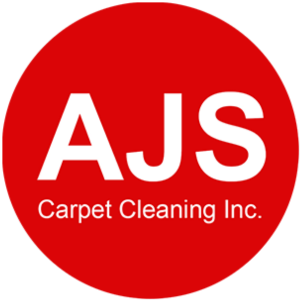Ways to Prevent Carpet Fiber Distortion
Ways to Prevent Carpet Fiber Distortion
Introduction:
Carpet fibers are the basic components of any carpet, providing comfort, insulation, and aesthetics. However, over time, these fibers can become matted, tangled, or form unsightly clumps. This deterioration not only affects the appearance of the carpet but also reduces its lifespan. Homeowners often wonder if there are effective preventive measures to minimize or eliminate carpet fiber deformation. In this article, we will explore various strategies and techniques that can help prevent the distortion of carpet fibers considering all modern carpet trends, allowing for a longer-lasting and more visually appealing carpet.
Understanding Carpet Fiber Distortion or Deformation:
Carpet fiber deformation, also known as pilling or matting, occurs due to a combination of factors. These factors include foot traffic, friction, improper cleaning techniques, low-quality materials, the type of carpet construction, etc.
Foot Traffic and Friction: High foot traffic areas are prone to fiber distortion as constant pressure and movement cause the fibers to rub against each other. Friction wears down the fibers, resulting in loose strands that can gather and form clumps.
Improper Cleaning Techniques: Using harsh cleaning agents, excessive scrubbing, or using inappropriate cleaning tools can damage carpet fibers. Aggressive cleaning techniques weaken the fibers and make them more susceptible to physical degradation.
Low-Quality Materials: Carpets made from low-quality materials often lack durability, making them more prone to fiber deformation. Inferior fibers may not have the strength to withstand normal wear and tear, leading to premature pilling and matting.
Carpet Construction: The construction of the carpet can also contribute to fiber degradation. Cut pile carpets, for example, have individual fibers that can become loose and tangle with one another, resulting in clumps and matting.
Preventive Measures:
While it may be challenging to completely eliminate carpet fiber distortion, several preventive measures can significantly reduce the problem and extend the life of your carpet.
Quality Carpet Selection:
The choice of carpet material plays a crucial role in its longevity and resistance to fiber damage. Opting for high-quality carpets made from durable materials such as nylon or wool can significantly reduce fiber shedding and matting. These materials have inherent resilience and are less prone to wear and tear. Furthermore, nylon and wool carpets are more resistant to abrasion and can maintain their appearance for a longer period.
Here are some essential tips to consider when choosing a quality carpet:
Fiber Type:
Nylon: Nylon is a popular and durable carpet fiber known for its strength and resilience. It is highly resistant to wear, stains, and fading, making it an excellent choice for high-traffic areas.
Wool: Wool is a natural and luxurious fiber known for its softness and durability. It has excellent soil resistance and retains its appearance for a long time. Wool carpets are more expensive but offer exceptional quality.
Polyester: Polyester is a synthetic fiber that is stain-resistant and offers good color retention. It is an affordable option and suitable for low-traffic areas.
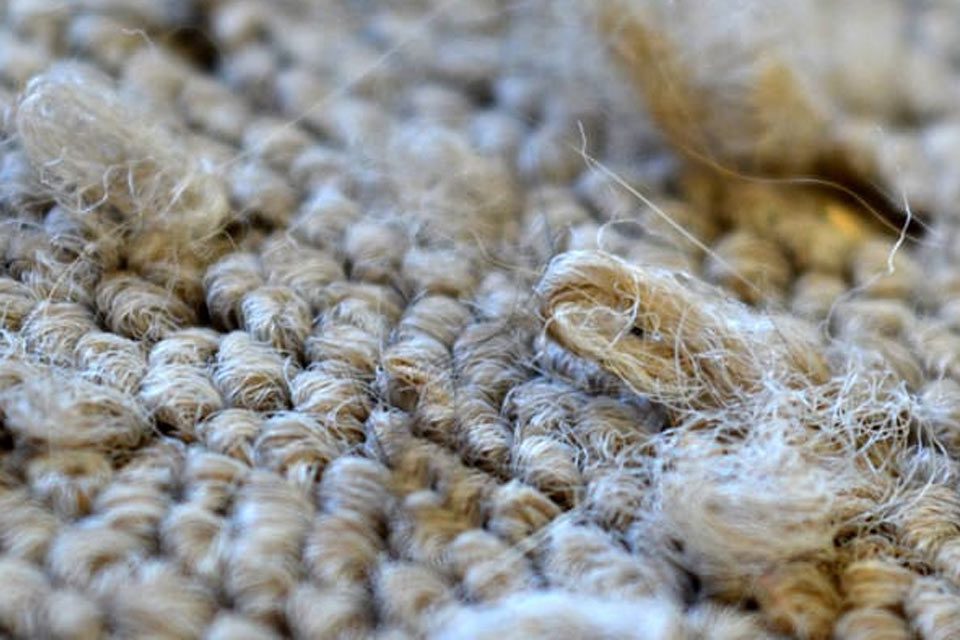

Density and Pile Height:
Density: Look for carpets with high density, which refers to the number of fibers per square inch. Dense carpets are more resistant to wear and maintain their appearance over time.
Pile Height: Consider the pile height, which is the length of the carpet fibers. Shorter piles are generally more durable and easier to clean, while longer piles provide a softer feel but may be more prone to matting.
Twist Level:
Twist refers to the number of times the fiber is twisted per inch. Carpets with a higher twist level have greater resilience and tend to resist matting and crushing better.
Carpet Padding:
Invest in high-quality carpet padding. Padding acts as a cushioning layer between the carpet and the subfloor, providing comfort and enhancing the carpet’s durability. It helps absorb impact and reduces fiber damage from foot traffic.
Stain Resistance and Maintenance:
Consider carpets treated with stain-resistant coatings or fibers. These carpets are easier to clean and maintain, as they repel spills and stains, preventing them from penetrating the fibers.
Evaluate the maintenance requirements of the carpet. Some carpets may require more frequent professional cleaning or special care, while others are easier to clean with regular vacuuming and spot cleaning.
Warranty and Manufacturer Reputation:
Check the warranty provided by the carpet manufacturer. A longer warranty period is indicative of a higher quality product.
Research and choose reputable carpet manufacturers known for their quality, customer service, and industry experience.
Consider your Lifestyle and Needs:
Consider your lifestyle, household members, and the level of foot traffic in the area where the carpet will be installed. For high-traffic areas or homes with pets and children, opt for more durable and stain-resistant carpets.
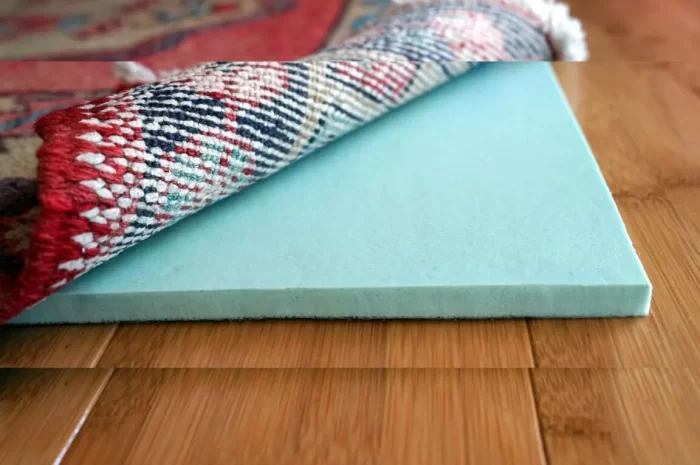
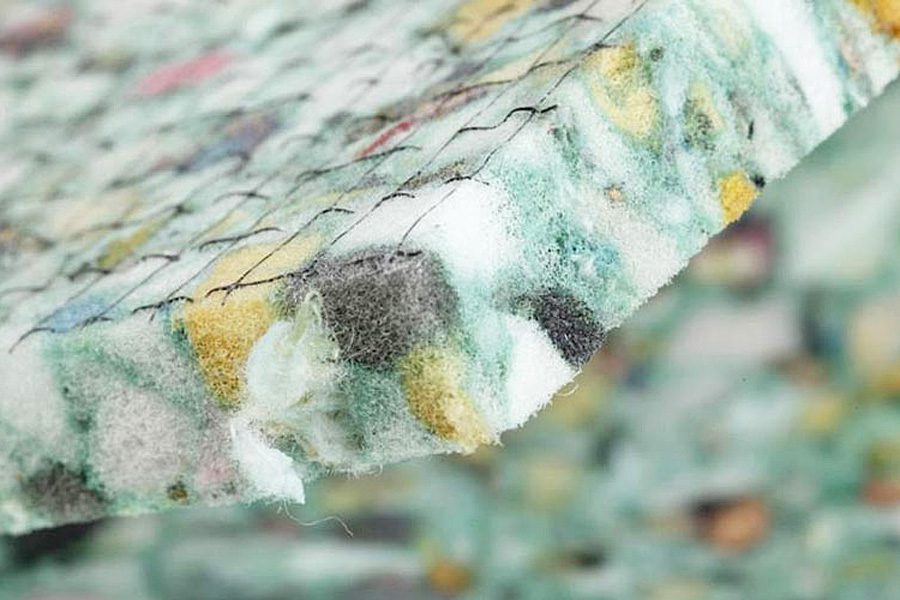
Color and Style:
Choose a carpet color and style that complements your overall interior design scheme. Lighter colors may show stains more easily, while darker colors can hide dirt and wear. Patterned carpets can also help mask signs of wear.
Gentle Cleaning Techniques:
When it comes to cleaning your carpet, opt for gentle methods that minimize fiber stress. Use mild cleaning agents specifically designed for carpets and follow the manufacturer’s instructions. Additionally, avoid aggressive scrubbing and use soft brushes or microfiber cloths for spot cleaning.
Here are some tips for gentle cleaning:
Use the right tools: Select cleaning tools that are appropriate for the surface you’re cleaning. For example, soft microfiber cloths are great for dusting and cleaning delicate items, while soft-bristle brushes or toothbrushes can be used for gentle scrubbing.
Avoid abrasive cleaners: Stay away from harsh and abrasive cleaners, as they can scratch or damage surfaces. Instead, opt for mild and non-abrasive cleaning solutions, such as dish soap diluted in water or vinegar mixed with water.
Test in an inconspicuous area: Before applying any cleaning solution or technique to a visible area, test it in a small, inconspicuous spot to ensure it doesn’t cause any damage or discoloration.
Regular Vacuuming:
Regular and proper vacuuming is essential for preventing fiber deformation in carpets. Vacuuming helps remove dirt, debris, and loose fibers that contribute to matting and tangling. It is recommended to vacuum carpets at least once a week, or more frequently in high-traffic areas. Additionally, using a vacuum cleaner with a rotating brush or beater bar can agitate the carpet fibers, dislodging any trapped dirt or debris. Here are some tips to help you make the most of your regular vacuuming routine:
Choose the right vacuum cleaner:
Select a vacuum cleaner that suits your specific needs. Consider factors such as the type of flooring you have (carpet, hardwood, etc.), the presence of pets or allergies, and the size of your home. Different vacuum cleaners offer various features and attachments that can enhance your cleaning experience.
Establish a vacuuming schedule:
Set a regular schedule for vacuuming based on the traffic in different areas of your home. High-traffic areas like entryways, hallways, and living rooms may require more frequent vacuuming compared to lesser-used spaces like bedrooms.
Clear the area:
Before you start vacuuming, remove any objects or clutter from the floor to ensure unobstructed access and more effective cleaning. This includes toys, shoes, and small items that can get tangled in the vacuum or obstruct the airflow.
Prepare the vacuum cleaner:
Check the vacuum bag or canister to ensure it’s not full. If necessary, empty or replace the bag and clean the filters. Clean filters ensure optimal suction and prevent debris from being recirculated into the air.
Adjust the height setting:
Most vacuum cleaners come with adjustable height settings to accommodate different flooring types. Adjust the height of the vacuum cleaner to ensure it is appropriately positioned for the specific surface you’re cleaning. Lower the height for carpets and raise it for hard floors to achieve efficient suction and cleaning.
Avoid Excessive Foot Traffic:
One of the primary causes of carpet fiber distortion is excessive foot traffic. The constant pressure and friction from walking can cause the fibers to tangle and mat. To prevent this, it is advisable to limit foot traffic on carpets as much as possible. Placing mats or rugs at entryways and high-traffic areas can help divert some of the foot traffic away from the carpet, reducing the risk of fiber damage.
Here are some tips to help you reduce foot traffic:
Create designated pathways:
Establish clear pathways within your home to guide foot traffic. Use rugs or floor runners to mark these pathways and direct people to walk in specific areas. This can help distribute foot traffic evenly and protect more delicate or high-maintenance flooring.
Use signage or visual cues:
If you have specific areas or surfaces that you want to protect from excessive foot traffic, consider using signs or visual cues to indicate that those areas are off-limits or should be used sparingly. This can be particularly useful for rooms or spaces that are prone to damage or have sensitive flooring.
Rearrange furniture:
Rearranging furniture strategically can help divert foot traffic away from certain areas. Consider positioning furniture in a way that naturally guides people around delicate surfaces or flooring that you want to protect. This can help create a flow that encourages people to walk in designated pathways.
Install protective coverings:
For high-traffic areas or surfaces that are particularly susceptible to wear and tear, consider using protective coverings such as rugs, mats, or runners. These can act as a barrier between foot traffic and the floor, reducing the impact on the surface and making it easier to clean and maintain.
Encourage shoe-free zones:
Encourage family members and guests to remove their shoes upon entering your home. Shoes can track in dirt, debris, and moisture, which can be damaging to floors and carpets. Provide a designated area near the entrance where shoes can be stored, and provide slippers or socks for comfort.
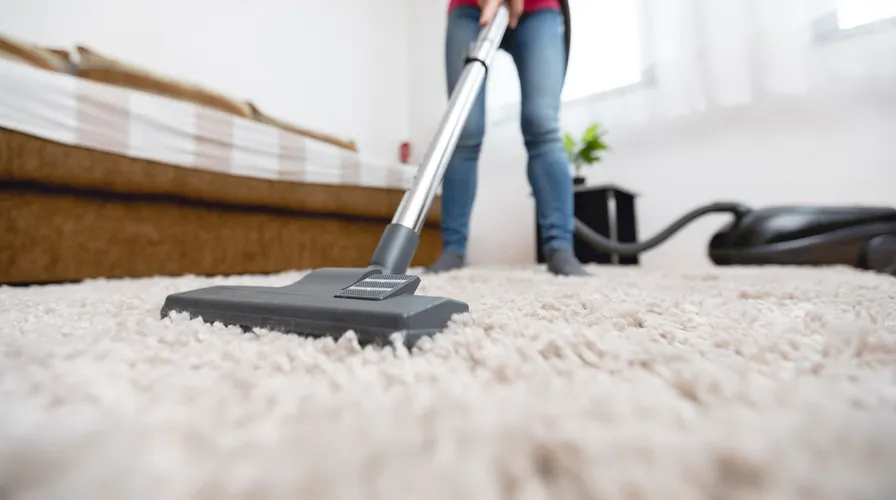
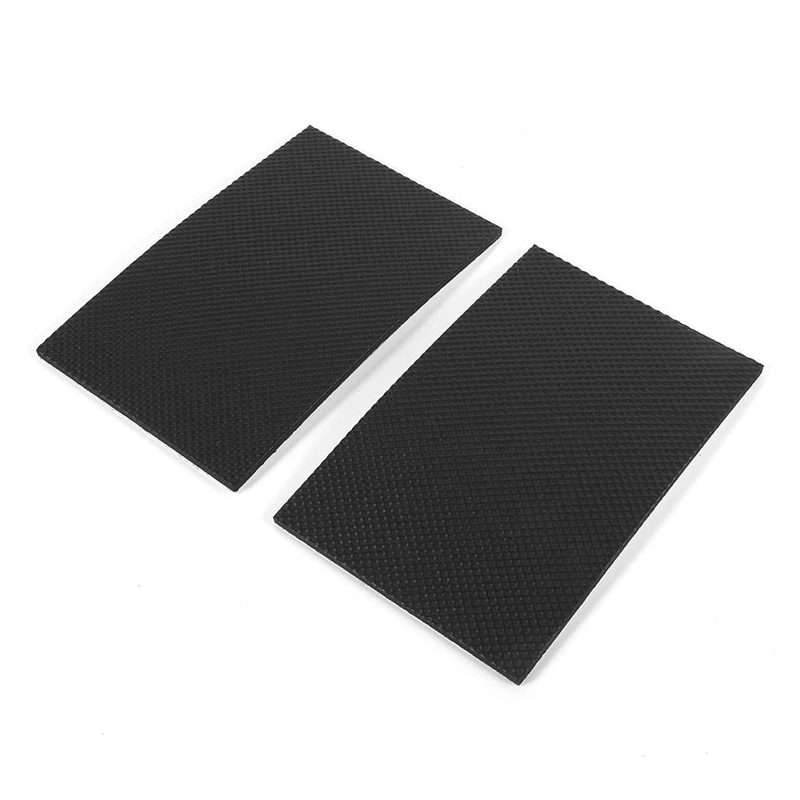
Use Furniture Pad:
Furniture can leave indents or impressions on carpets, leading to fiber deformation and matting. Placing furniture pads or glides under the legs of chairs, tables, and other heavy items can help distribute the weight more evenly and minimize the impact on the carpet fibers. Regularly moving furniture or using carpet-friendly casters can also prevent prolonged pressure on specific areas of the carpet.
Tips for Using Furniture Pads Effectively:
Choose the right type of furniture pad: Consider the weight and type of furniture you have. Felt pads are suitable for light to moderate furniture, while rubber or silicone pads are ideal for heavier items.
Properly measure and cut the pads: Ensure that the furniture pads adequately cover the entire leg or base of the furniture to provide optimal protection. If necessary, trim the pads to fit the size of the furniture.
Clean the furniture legs and carpet: Before applying the furniture pads, clean the furniture legs and the carpet surface to remove any dirt or debris. This ensures a better adhesive bond between the pads and the furniture legs.
Check and replace pads regularly: Over time, furniture pads may wear out or accumulate dirt, reducing their effectiveness. Regularly inspect the condition of the pads and replace them if they show signs of wear or if they no longer provide adequate protection.
By using furniture pads, you can prevent indentations, minimize fiber damage, and maintain the overall appearance and longevity of your carpet. These simple and affordable accessories offer an excellent solution for protecting your carpet investment and ensuring its beauty for years to come.
Professional Cleaning and Maintenance:
Engaging professional carpet cleaning services on a regular basis can help prevent fiber damage. Professional cleaners use specialized equipment and techniques to deep clean carpets, removing deeply embedded dirt and revitalizing the carpet fibers. Additionally, professional cleaners can apply protective treatments to carpets, such as stain repellents or fiber conditioners, which can enhance the carpet’s resistance to fiber damage.
Conclusion:
While it may be impossible to completely eliminate fiber distortion in carpets, taking preventive measures can significantly reduce its occurrence and prolong the carpet’s lifespan. Choosing high-quality carpets, regular vacuuming, minimizing foot traffic, using furniture pads, and seeking professional cleaning and maintenance services are all effective strategies to prevent fiber degradation. By implementing these preventive measures, homeowners can enjoy a visually appealing and long-lasting carpet that enhances the overall aesthetics of their living spaces.
Carpet Cleaning Tips and Tricks
How to get dog pee out of carpet?
Removing dog urine from carpet can be a challenge, especially if it has set for a while. However, with the right approach, you can effectively remove the stain and odor. Here’s a step-by-step guide:
Blot the Fresh Stain:
- If the urine is still wet, use paper towels or a clean cloth to blot up as much of the urine as possible. Do not rub, as this can spread the urine and push it deeper into the carpet fibers.
- Place a thick layer of paper towels on the wet spot and press down with your feet or place a heavy object on top to help absorb the moisture.
Prepare a Cleaning Solution:
- Vinegar and Baking Soda: Mix equal parts of white vinegar and water in a spray bottle. Spray the affected area generously. Let it sit for a few minutes, then sprinkle baking soda over the area.
- Commercial Enzymatic Cleaners: These are specifically designed to break down the proteins in urine, eliminating both the stain and odor. Brands like Nature’s Miracle or Simple Solution are popular choices. Always follow the manufacturer’s instructions.
Apply the Cleaning Solution:
- If using the vinegar solution, after sprinkling baking soda, let it fizz and sit for a few hours or overnight if possible.
- If using an enzymatic cleaner, apply as directed on the product label.
Blot and Rinse:
- After the solution has had time to work, blot the area with a clean cloth to remove any excess moisture.
- Rinse the area with cool water and blot again to remove the cleaning solution. This step is crucial to prevent any residue from attracting dirt in the future.
Vacuum:
Once the area is completely dry, vacuum to restore the carpet’s texture and remove any leftover baking soda or residue.
Check for Remaining Odor:
If you can still smell urine, it may have soaked into the carpet padding or even the subfloor. In such cases, you might need to treat the area multiple times or consider hiring a professional carpet cleaner.
Prevent Future Accidents:
- If your dog has an accident once, they might be inclined to return to the same spot. Clean the area thoroughly to remove any lingering scents that might attract your dog back to the spot.
- Consider using a pet repellent spray or another deterrent to keep your dog away from the area.
Remember, always test any cleaning solution on a small, inconspicuous area of your carpet first to ensure it doesn’t cause discoloration or damage.
How to get dog pee smell out of carpet?
If you’ve managed to remove the visible stain from dog urine but are still battling the lingering odor, here are some steps and methods to help you eliminate the smell:
Enzymatic Cleaners:
- These cleaners contain enzymes that break down the proteins in urine, which are the primary cause of the odor.
- Brands like Nature’s Miracle, Simple Solution, or Rocco & Roxie are popular choices.
- Follow the manufacturer’s instructions. Typically, you’ll want to saturate the area to ensure the cleaner reaches the carpet padding where urine might have soaked.
Vinegar and Baking Soda:
- Mix equal parts of white vinegar and water in a spray bottle. Spray the affected area generously.
- Let it sit for a few minutes, then blot up as much moisture as you can.
- Once the area is mostly dry, sprinkle baking soda over it. The baking soda will help absorb and neutralize odors.
- After letting the baking soda sit for a few hours or overnight, vacuum it up.
Hydrogen Peroxide:
- Mix a solution of ½ cup of 3% hydrogen peroxide, 1 teaspoon of dish soap, and 2 tablespoons of baking soda.
- Test this solution on an inconspicuous area of your carpet first to ensure it doesn’t bleach or discolor the fibers.
- Apply to the affected area and let it sit for an hour or so, then blot and rinse with water.
Professional Cleaning:
If home remedies aren’t effective, consider hiring a professional carpet cleaning service. They have specialized equipment and solutions that can deeply clean and deodorize carpets.
Odor Neutralizers:
There are commercial odor neutralizers available that can help mask and eliminate pet odors. These can be sprayed or sprinkled on the affected area.
Air Out the Room:
- Open windows and doors to allow fresh air to circulate and help dissipate the odor.
- Consider using fans to help speed up the process.
Replace the Carpet Padding:
In extreme cases where the urine has deeply soaked into the carpet padding or subfloor, you might need to replace the padding in that particular area. This is a more drastic measure but can be effective in completely eliminating deep-set odors.
Prevention:
- Train your dog to avoid accidents indoors.
- Consider using a waterproof carpet pad, which can prevent liquids from soaking through to the subfloor.
- Regularly clean and deodorize areas your dog frequents to prevent the buildup of odors over time.
Remember, always test any cleaning solution on a small, inconspicuous area of your carpet first to ensure it doesn’t cause discoloration or damage.
What neutralizes dog urine?
Dog urine can be neutralized using a combination of methods that address both the stain and the odor. Here are some substances and methods that can neutralize dog urine:
White Vinegar:
- White vinegar is a natural acid that can neutralize the alkaline salts present in dried dog urine stains.
- Mix equal parts of white vinegar and water and apply it to the urine stain. Allow it to sit for a few minutes, then blot up the moisture.
Baking Soda:
- Baking soda is an alkaline substance that can neutralize acidic components in urine. It also acts as a natural deodorizer, absorbing odors.
- After treating a urine spot with vinegar, sprinkle baking soda over the area, let it sit for a few hours or overnight, and then vacuum.
Enzymatic Cleaners:
- These cleaners contain enzymes that break down the proteins and uric acid crystals in urine, effectively neutralizing the stain and odor.
- Popular brands include Nature’s Miracle, Simple Solution, and Rocco & Roxie. Always follow the manufacturer’s instructions.
Hydrogen Peroxide:
- Hydrogen peroxide can help neutralize the odor of dog urine. However, it can also bleach or discolor certain materials, so always test a small, inconspicuous area first.
- Mix a solution of ½ cup of 3% hydrogen peroxide with a teaspoon of dish soap and apply to the urine stain. Allow it to sit for a while, then blot and rinse.
Dish Soap:
Mild dish soap can help break down the uric acid and remove the stain. It’s often mixed with other solutions, like hydrogen peroxide, for a more effective treatment.
Lemon Juice:
The citric acid in lemon juice can help neutralize the alkaline components of dog urine. Mix equal parts of lemon juice and water and apply to the stain. However, be cautious, as lemon juice can also bleach certain fabrics.
Cornstarch:
Cornstarch can help absorb fresh urine, reducing the amount of urine that needs to be neutralized. Sprinkle cornstarch over a fresh urine spot, let it sit for a few hours, then vacuum.
Water:
Rinsing the affected area with water after treating it with any of the above solutions can help wash away the urine components and any cleaning residues.
When dealing with dog urine, it’s essential to act quickly. The longer the urine sits, the harder it will be to neutralize and remove the stain and odor. Always test any solution on a small, inconspicuous area first to ensure it doesn’t cause discoloration or damage.
